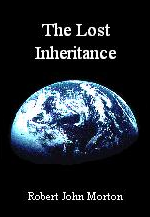Cosmological Model
Cosmologists believe the universe began as a smooth homogeneous set of force fields. These then distilled into the fundamental particles which themselves distilled into atoms. Atoms collected into gas and dust. This then gravitated into stars, planets and galaxies. Matter — the essence of which was originally spread evenly — gradually gathered into ever larger and more concentrated structures.
For matter to gather into a star or galaxy, a small initial kink must first be created in the fabric of space-time. Without such a kink, matter would have no reason to move from where it was to start with. What caused the first kink? Was it the Finger of God stirring that primordial homogeneous soup of force fields that sent those first particles cascading towards a centre of attraction?
Whatever it was, the same principle seems to be at work constantly in the Global Free Market. Thus from insignificant initial disparities, more and more of all wealth seems to gravitate into fewer and fewer hands. The rich get richer and fewer while the poor get poorer and more numerous.
Nature's Upper Limit
However, nature seems to impose upper limits on the sizes of the various structures which make up the universe. The largest possible atom is no more than about 256 times the mass of the smallest. Atoms larger than this would instantly fall apart. The rules by which their constituent parts interact simply do not allow them to become any bigger. Nature thereby provides itself with a neat kit of 100 or so basic components from which the universe is built. The sizes of planets, stars and galaxies also seem to be bound by limits beyond which they cannot exist.
In the human domain, the largest nuclear family is limited by the maximum number of children a couple may practically procreate and provide for. Probably about 12. The natural (or anthropological) human community is limited to a maximum imposed by the physiology of the human brain regarding the number of other human beings each of its members can recognise.
No Limit For Companies
But the limited liability joint-stock company is an artificial construct. It is subject to no such natural limits. It can expand until it has enveloped the whole of its universe — the Global Free Market. Such a company is able theoretically to diversify into every economic endeavour known to man, and devour the whole of every trade which takes place within the entire Global Free Market.
To protect itself completely from mishap, it would not trade directly in any particular part of the market. Instead, it would buffer itself from the outside market by using a labyrinthine hierarchy of subordinate limited liability joint-stock companies to do the actual trading on its behalf. Such a vast 'holdings' company would, in effect, be a global monopoly. It would control all economic activity everywhere on the planet.
Even if the global economy were divided among many such holding companies, the same small clique of super-capitalists could hold all the shares in all of them. Control of all the economic activity everywhere on the planet would thus still be in the hands of these elite few unseen and unknown individuals who would alone control the gate through which flowed the vital sustenance of the whole human race. With no force to impose an upper limit on the size of a limited liability joint-stock company and the amount of capital any one individual can accumulate, the destiny of the Global Free Market must be to be dominated by one global monopoly.
Anti-Trust?
Of course there are various legal instruments in various nations which supposedly cap the power of corporate entities operating within their jurisdictions. They go under various names like 'anti-trust' laws and 'monopolies and mergers commissions'. But these are, for all practical purposes, toothless as regards protecting the individual against the ways and whims of these corporate leviathans. And indeed, a corporate does have to be extremely large before it even comes to the attention of one of these supposed instruments of regulation.
Those who own the wealth-generating resources of the Earth effectively own the Global Free Market through which the fruits of those resources are exchanged. And the greater is the proportion of the terrestrial resources which they own or control, the greater is their effective share of the Global Free Market.
Conclusion
Imagine a world in which atoms could grow to the size of golf balls, each weighing of the order of 100,000 million tonnes, bouncing around at relativistic speeds in a universal self-sustaining billiard break. This is the global free market. And it is becoming ever more extreme. Its path to self-destruction is inevitable. But it will not only destroy itself. Like a cancer, it will eventually stifle every function of the society that gave it existence.
Only when the size of corporate entities is limited to 12 people. Only when those who own them can no longer hide from their moral economic responsibilities behind the wall of limited liability. Only when the wealth of each participant is limited to a fair one seven-billionth [global population at the time of writing] share of global wealth. Only then will mankind have taken the first step along the rocky road to freedom, equity and universal well-being.
Parent Document |
©September 1995 Robert John Morton
